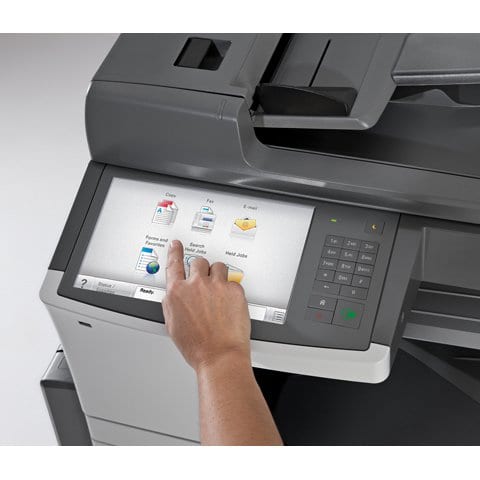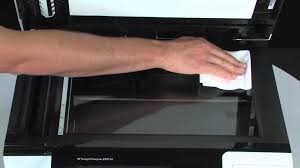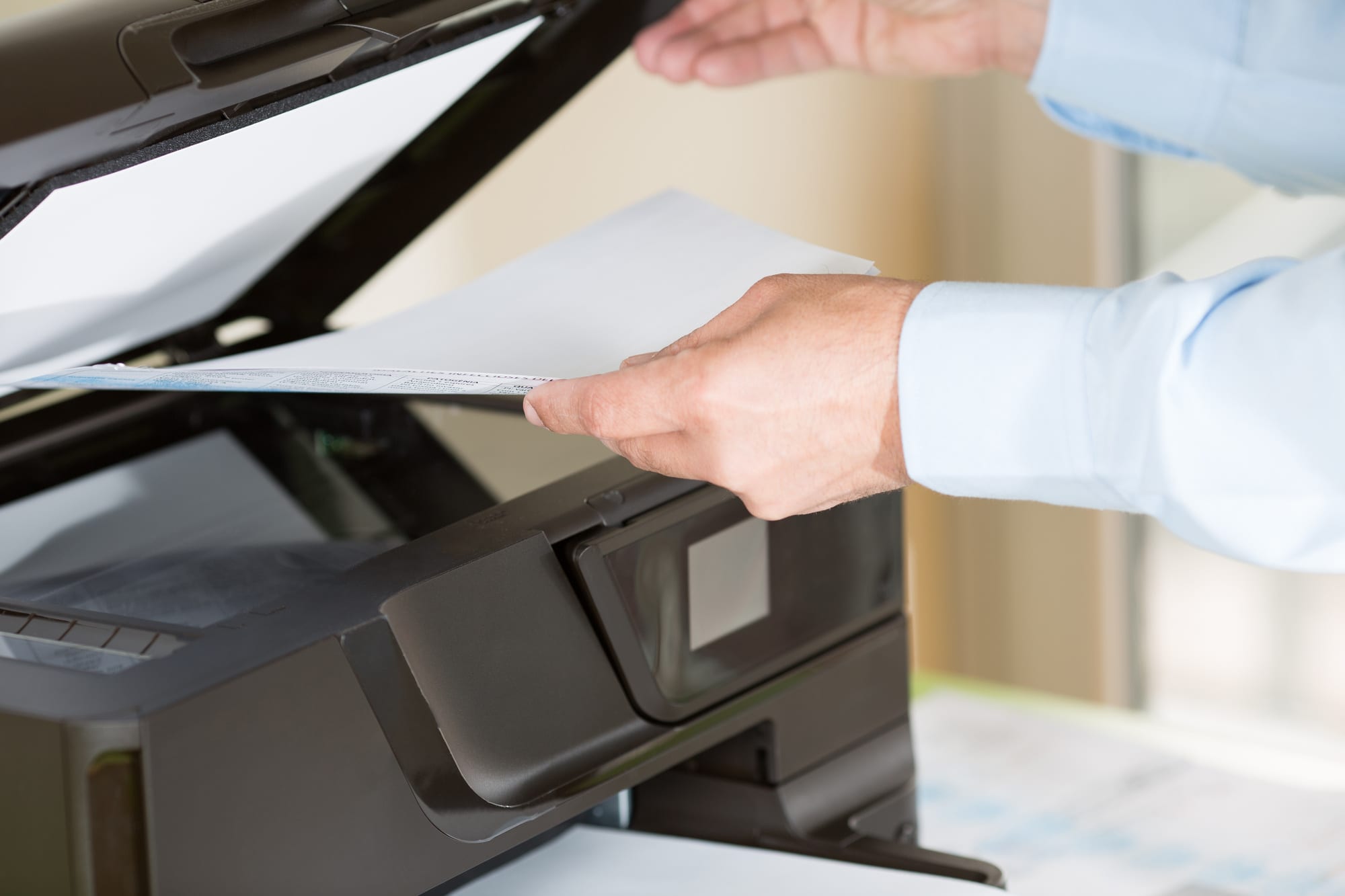
Top 8 Commercial Copier Features in 2023
The world of commercial copiers has undergone a remarkable transformation in recent years, with technological advancements leading the way. As businesses adapt to an increasingly digital landscape, the demand for multifunctional, efficient, and secure copier features has grown. In 2023, we’ve observed a trend toward devices that aren’t merely “copy machines” but integral tools for business productivity. Here are the top eight commercial copier features businesses should be looking for in 2023:
COMPARE QUOTES NOW1. Multi-Functionality
All-in-One Devices: Today’s commercial copiers are no longer just copiers. They have morphed into multifunctional devices that can scan, print, copy, fax, and even email documents. This consolidation has allowed businesses to save space, reduce costs, and streamline operations.
2. Enhanced Security
Secure Printing: In an age where data breaches are a significant concern, copier manufacturers have stepped up their game in ensuring document security. Features like secure print release, where a user PIN or an ID badge is required to release print jobs, have become standard. This ensures sensitive information doesn’t end up in the wrong hands.
3. Cloud Integration
Easy Cloud Access: With many businesses transitioning to cloud-based storage solutions, copiers now come equipped with the ability to scan directly to cloud storage platforms like Google Drive, Dropbox, or OneDrive. This simplifies document management and accessibility, making it easier for remote teams to collaborate.
4. Sustainable Printing
Eco-Friendly Options: Environmental consciousness is at the forefront of business operations. Newer copier models often come with energy-saving modes, sustainable ink options, and features that reduce paper waste, like double-sided printing.
5. Advanced Connectivity
Wireless and Mobile Printing: In today’s mobile-first world, the ability for employees to print directly from their smartphones or tablets is crucial. Many commercial copiers now offer wireless printing capabilities, recognizing and catering to the needs of a modern workforce.

6. Touchscreen Controls
User-Friendly Interface: The clunky buttons of yesteryear’s copiers have been replaced with intuitive touchscreen controls. This not only modernizes the user experience but also facilitates seamless navigation, customization, and faster access to essential functions.
7. High-Quality Imaging
Improved Resolution and Color Accuracy: Businesses often require high-quality images for marketing materials, presentations, and reports. The latest commercial copiers boast impressive resolutions, ensuring vibrant colors and sharp images, rivaling professional print shops.
8. Expandable Storage and Memory
Adaptable to High Workloads: For businesses with high-volume printing needs, copiers equipped with expandable storage and memory are essential. This ensures the device can handle complex print jobs, store multiple tasks, and operate without lags or delays.
COMPARE QUOTES NOWChoosing a commercial copier in 2023 is not just about finding a machine that makes copies. It’s about finding a solution that integrates seamlessly with a company’s workflow, supports its sustainability goals, offers top-tier security, and enhances overall productivity. By prioritizing these eight features, businesses can ensure they’re investing in a device that will serve them well now and into the future.

Identifying Your Commercial Copier Needs
When it comes to selecting the ideal commercial copier for your business, understanding your specific needs is paramount. This is not a one-size-fits-all scenario. Different businesses have different requirements, and your choice should reflect those unique needs. Here’s a guide to help you pinpoint what you’re looking for:
Assess Your Volume
Start by gauging the average volume of copies and prints your business makes in a day or a month. If you’re a small business that only needs occasional copying, a heavy-duty commercial copier may be overkill. Conversely, a large organization with daily high-volume printing needs should prioritize machines built for endurance and speed.
Determine Desired Functions
While most modern copiers are multifunctional, it’s essential to list out the specific functions your business requires. Do you need fax capabilities? Is scanning to the cloud a priority? By defining your essential functions, you can filter out machines that offer extraneous features you won’t use.
Consider Print Quality
If your business frequently prints marketing materials, presentations, or graphics, image quality will be a top priority. On the other hand, if you’re primarily printing text-based documents, standard resolution might suffice.
Think About Integration
How well will the copier integrate with your existing systems? Check for compatibility with your network, devices, and software. This will ensure a smoother transition and reduced disruptions when incorporating the new machine into your workflow.
Prioritize Security
In today’s digital era, ensuring the security of your documents and data is more important than ever. If you handle sensitive information, look for copiers that offer enhanced security features, such as encrypted transmissions, secure print release, or user authentication.
Factor in Future Growth
While you should select a copier based on your current needs, it’s also wise to consider potential future growth. If you anticipate your business scaling up in the next few years, investing in a copier that can handle increased demand might be a wise decision.

Evaluate Maintenance and Support
Even the best commercial copiers can run into issues. Prioritize brands or vendors that offer robust support, whether it’s through warranties, maintenance packages, or customer service hotlines. This ensures any disruptions are dealt with promptly, minimizing downtime.
Set a Budget
Of course, cost is a significant factor in any business decision. Establish a budget range for your copier purchase. Remember to factor in not just the upfront cost of the machine, but also ongoing expenses like maintenance, ink or toner, and paper.
Ask for Demos or Trials
Before finalizing a purchase, see if the vendor offers demonstrations or short-term trials. This allows you to test the machine in a real-world setting, ensuring it meets your needs and integrates well with your existing systems.
COMPARE QUOTES NOWUnderstanding your commercial copier needs is a process that requires a deep dive into your business’s operational requirements. By taking the time to assess these factors thoroughly, you’ll be well-positioned to make an informed decision that will benefit your organization in both the short and long term.
Difference Between a Home Copier and a Commercial Copier
While both home copiers and commercial copiers serve the fundamental purpose of reproducing documents, the two are built for entirely different environments and demands. Understanding these differences is crucial, especially if you’re in a decision-making position regarding the acquisition of office equipment.
1. Volume and Durability
- Home Copier: Designed for occasional use, such as copying personal documents, children’s assignments, or recipes. Typically, they have a lower monthly duty cycle, which is the maximum number of pages the device can handle in a month without straining its components.
- Commercial Copier: Built for regular, high-volume use. They boast higher monthly duty cycles, often capable of handling tens of thousands of pages each month. Their build is also more robust and durable, ensuring longevity even with heavy use.
2. Speed and Efficiency
- Home Copier: These machines tend to be slower, averaging around 8-15 pages per minute.
- Commercial Copier: Commercial devices, especially high-end models, can handle up to 100 pages per minute, ensuring that large copying jobs are completed rapidly.
3. Features and Multifunctionality
- Home Copier: Generally offers basic functions such as copying, printing, and sometimes scanning. The feature set is relatively limited.
- Commercial Copier: These machines often come as multifunction devices (MFDs) or multifunction printers (MFPs). This means they can copy, print, scan, fax, and even email documents. They also provide features like double-sided copying, stapling, binding, and high-resolution scanning.

4. Cost and Maintenance
- Home Copier: Less expensive upfront but may have higher long-term costs due to less efficient ink or toner usage. Maintenance is typically done on an as-needed basis, and repairs can sometimes cost nearly as much as replacement.
- Commercial Copier: While they come with a heftier price tag upfront, they can be more cost-efficient in the long run. Their design allows for easier maintenance, and they often come with comprehensive service agreements.
Why Businesses Need a Commercial Copier
- Reliability and Uptime: A commercial copier is designed to handle the rigorous demands of a business environment. This means fewer breakdowns and disruptions, ensuring smooth operations.
- Cost Efficiency: For businesses with regular printing and copying needs, a commercial copier, with its efficient toner usage and energy-saving features, can lead to significant cost savings over time.
- Quality and Professionalism: Commercial copiers often produce higher-quality prints, which is essential for professional documents, presentations, and marketing materials.
- Scalability: As businesses grow, so do their copying and printing needs. Commercial copiers are designed to grow with the company, either through increased capacity or through networked devices.
- Security Features: Many commercial copiers come equipped with advanced security features, including user authentication, secure print release, and data encryption. This is crucial for businesses handling sensitive information.
While the allure of saving money with a home copier might seem enticing, it’s essential for businesses to think long-term. The demands of a commercial environment necessitate equipment built for the task. Investing in a commercial copier ensures efficiency, reliability, and quality – all crucial components for modern businesses.

Top 10 Commercial Copiers in 2023
In 2023, the landscape of commercial copiers is vast, with machines designed to cater to a wide range of business needs. While the best choice often depends on your specific requirements, here’s a curated list of the top 10 commercial copiers that have been receiving attention:
- Canon imageRUNNER ADVANCE DX Series
- Canon’s flagship series, known for its robust performance, intuitive touchscreen interface, and advanced security features. Its seamless integration with cloud services makes document management a breeze.
- Xerox VersaLink C7000 Series
- With impeccable print quality and the ability to handle high print volumes, the VersaLink series is great for businesses of all sizes. It boasts of ConnectKey Technology which offers mobile and cloud connectivity.
- Ricoh IM C4500/IM C6000
- Ricoh’s multifunction devices stand out due to their vibrant color output, high-speed scanning, and the ability to handle a wide range of paper sizes and types.
- Kyocera TASKalfa 8052ci
- Known for its durability and high-quality color prints. Its long-life components ensure reliability and less waste, making it an eco-friendly option.
- Konica Minolta bizhub C360i
- This machine is revered for its user-friendly interface, rapid print speeds, and enhanced security features. The bizhub series also integrates seamlessly with a variety of software solutions.
- Sharp MX-7580N
- An excellent choice for high-volume environments. With advanced finishing options and reliable performance, this copier is versatile and efficient.
- Toshiba e-STUDIO7506AC
- Toshiba’s offering in the high-volume segment is powerful and boasts of a customizable tablet-like interface. Energy-saving features make it a green choice for businesses.
- HP LaserJet Enterprise Flow MFP series
- HP’s multifunction devices are known for their reliability, rapid print speeds, and advanced security features. They also provide smooth integration with digital workflow solutions.
- Brother MFC-L6900DW
- A great choice for businesses looking for a mix of value and performance. Its high-yield cartridges ensure cost-effective printing, and the machine offers robust scanning capabilities.
- Lexmark CX923 Series
- With powerful processing, the CX923 series offers high-speed color printing, advanced finishing options, and a host of security features. Its intuitive touchscreen makes operations straightforward.
Selecting the right commercial copier is essential for ensuring smooth business operations. When deciding on a machine, consider factors such as print volume, security requirements, integration needs, and of course, budget. Each of the copiers listed above has its strengths, so assess your needs and consult with suppliers or reviews to make the best choice for your business.

How Much Do Commercial Copiers Cost?
Commercial copiers, with their intricate features and functionalities, come at a broad range of prices. The cost of these machines can vary significantly based on the brand, features, print speed, capacity, and many other factors. Here’s a breakdown of the costs you can expect:
Average Cost of Commercial Copiers
The average cost for a commercial copier can range from $3,000 to $12,000. This bracket accommodates most mid-range machines that are suitable for small to medium-sized businesses with moderate printing needs.
- Entry-Level Commercial Copiers: These machines are designed for smaller businesses or those with lower printing volumes. Typically, they might lack some of the advanced features of pricier models but are more than sufficient for basic copying, printing, and scanning tasks. They generally range from $3,000 to $5,000.
- Mid-Range Commercial Copiers: These copiers come equipped with a broader range of features, faster print speeds, and larger paper capacities. They are designed for businesses with regular printing needs. The price for these devices typically falls between $5,000 to $8,000.
- High-End Commercial Copiers: These are the cream of the crop, designed for large businesses with high-volume printing requirements. They often have all the advanced features a business might need, from high-speed printing to advanced security and integration capabilities. Prices usually range from $8,000 to $12,000, with some specialized machines or those with the highest capacities exceeding this range.
Cost of Top-of-the-Line Copiers
For businesses that want the best machines with no compromises, there are top-tier commercial copiers that provide unparalleled performance and features. These machines are ideal for corporations, publishing houses, and organizations with extensive printing and copying needs. Prices for top-of-the-line copiers can range from $12,000 to $30,000 or even more, depending on the brand and features.
It’s worth noting that besides the initial investment, businesses should also factor in the ongoing costs of maintenance, toner or ink, and paper. Some businesses might find leasing a copier to be more cost-effective, especially if they want to ensure they always have access to the latest technology without a significant upfront expenditure.
COMPARE QUOTES NOWWhile the cost of a commercial copier can seem high initially, it’s essential to consider the value and efficiency it brings to daily operations. A well-chosen copier can streamline workflows, reduce downtime, and enhance productivity. It’s always a good idea to assess your business’s specific needs and budget before making a decision and consulting with professionals in the field can provide insights into the best options available.

Financing and Leasing Options for Commercial Copiers
When contemplating the acquisition of a commercial copier, one doesn’t necessarily have to opt for an outright purchase. Many businesses find that financing or leasing their copiers provides flexibility and financial advantages.
1. Financing a Commercial Copier
Financing allows businesses to purchase a copier and pay it off in monthly installments. The primary benefits include:
- Ownership: At the end of your payment term, you own the equipment outright.
- Tax Advantages: Depending on how you finance, there could be potential tax benefits like depreciation.
However, the downside is that as the owner, you’re responsible for any maintenance or repairs after the warranty expires.
2. Leasing a Commercial Copier
Leasing commercial copiers, on the other hand, is akin to renting the copier for a specified period:
- Up-to-date Technology: It’s easier to upgrade or change your machine at the end of your lease term. This ensures you always have access to the latest technology.
- Predictable Monthly Expenses: Leasing can help businesses maintain a consistent budget without a significant upfront cost.
- Maintenance Packages: Many lease agreements come with maintenance packages that cover repairs, ensuring the machine is always in top working condition.
However, over time, leasing can be more expensive than buying, and you won’t own the equipment at the end of the lease unless you opt for a lease-to-own agreement.
Consider the Resale Value
Another aspect to mull over is the potential resale value of the copier. Like cars, copiers can depreciate over time, but some brands and models retain value better than others. If you anticipate your business’s needs changing in the foreseeable future, it might be wise to consider a model that you can sell later. This strategy can help recoup some of the initial investment.
Investing in a commercial copier is a significant decision that requires thorough research and consideration. By understanding the complete landscape—from the type of machine that fits your business needs, to the costs, financing options, and potential for resale—you can make an informed choice that aligns with your operational requirements and budgetary constraints. Always remember, the right copier can significantly enhance efficiency, making it a valuable asset for any business.
COMPARE QUOTES NOW